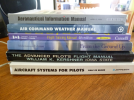I think you said you were excluding Light Sports from consideration to go with something “more familiar“ to you.
But…
1) A Light Sport is likely to be 30, 40 or even 50+ years newer than some of the “legacy“ aircraft you’re considering. All things considered, likely to have less wear and fewer issues with parts availability and maintenance issues in general. The avionics are likely to be newer and better integrated than even an upgraded panel in a “legacy” plane.
2) If you find an Experimental LSA, or one you can convert, you are then able to do all the maintenance you‘re comfortable with, and even your own Annual Condition Inspections with a 16 hour course.That in itself can save a small fortune in maintenance.
3) A ROTAX-powered LSA can sip as little a 4 or 5 gph, and can do it with high test auto fuel. Spark plugs are less than $4 each, they only take 3 qts of oil, and in my experience are at least as reliable as a Continental or Lycoming. So far, parts availability has been good.
At least take a look at the Flight Design CT, REMOS, Aeroprakt, or any one of several other quality brands out there. And, finally, I think they’re more fun to fly. In your situation, it’s definitely what I would choose.





